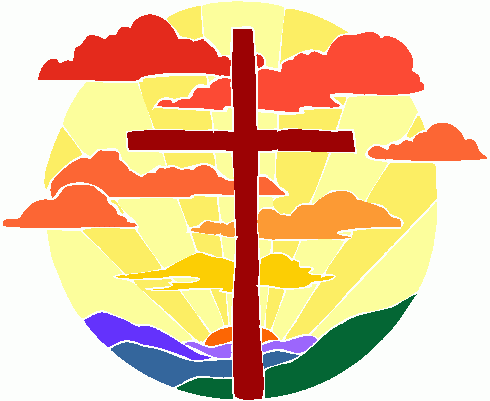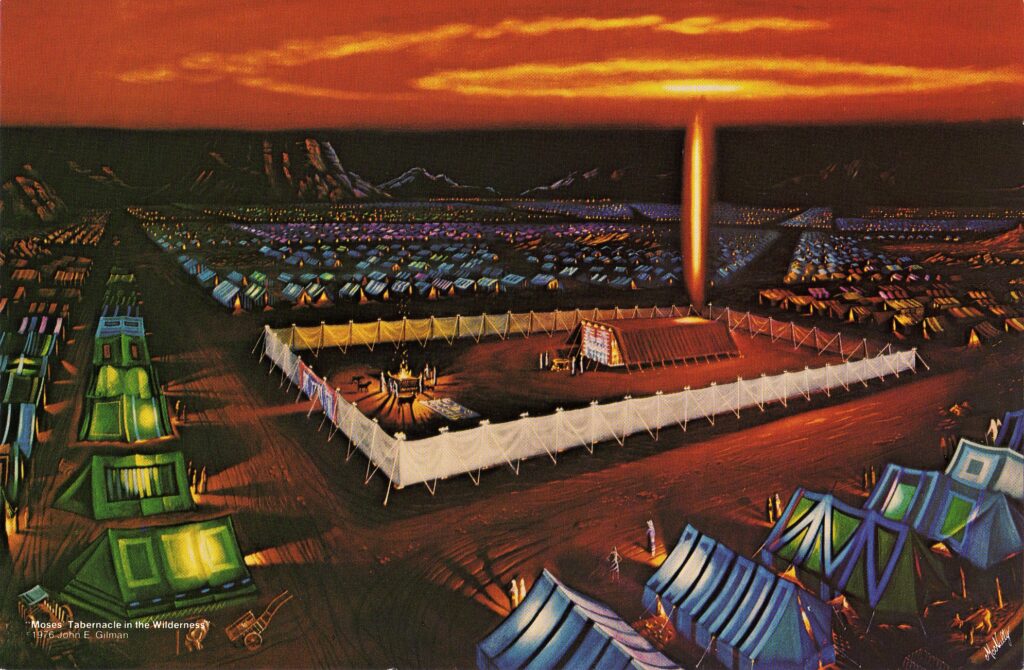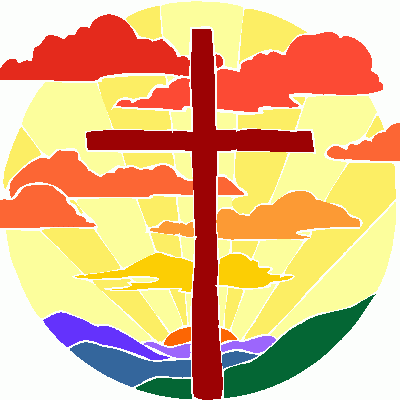The word “tabernacle” is a translation of the Hebrew mišḵân in the Old Testament, and the Greek skēnē in the New Testament. Both convey the meaning of “dwelling place” more than “building”. A tabernacle is where someone lives. Although it can be used of different people and even of animals, in the Bible it is almost always the place where God “lives”. Of course, He is not limited to a single location, but the tabernacle was where His presence with His people was most noticeably on display.
The first tabernacle was a portable tent, originally during the Exodus and continued once the people arrived in Canaan. It was replaced by a permanent temple built using the same design by King Solomon (using materials and plans gathered by his father, King David). Solomon’s temple was destroyed by the Babylonians in 586 B.C. It was rebuilt, on a much smaller scale, when the Jews were allowed by Cyrus of Persia to return to their homeland 70 years later. The “Second Temple” was plundered — but not destroyed — first by the Greek ruler Antiochus Epiphanes in 169 B.C. and then by the Roman Empire in 63 and 54 B.C. King Herod the Great (yes, he of the Christmas story) rebuilt and greatly expanded the temple as one of many building projects 1.
The design for the original tent-tabernacle and all of its successors was given to Moses by God at the same time as the Ten Commandments. The specs for the tent, its furnishings, the priests, and the sacrifices go on for 6-1/2 chapters, from Exodus 25 thru Exodus 31:11, giving very specific details. All of them add up to the picture of a holy, otherwise-unapproachable, God making a way for His people to come into His presence. That privilege is not to taken lightly; everything about the tabernacle is designed to emphasis what a solemn and awesome gift it is.
From outside to inside, the materials and furnishings grow more costly and intricate. Access to move from outside to inside was increasingly restricted, as well. All of the people could enter the open 150-foot by 75-foot courtyard; only the priests could enter the 45-foot by 15-foot enclosed tabernacle; and only the high priest could go from the front Holy Place into the rear Most Holy Place. Everyone had to be physically washed and ceremonially cleansed from sin before entering their allowed area.
Only the Levites (one of the twelve tribes, descended from Jacob’s son Levi) were allowed to handle the transport and setup of the tabernacle and its furnishings. During camp, the tabernacle was in the center, with the twelve tribes setting up their camps in specific places around it, three tribes to each side.
Artistry and Craftmanship
Every item involved in the tabernacle was constructed of the finest materials available. To keep from being repetitive in the following descriptions, here are some of the materials that were used.
- Fine linen, white with blue and purple and scarlet, embroidered with cherubs: This was used for the innermost curtain forming the walls and ceiling, for the front entrance curtain, and for the curtain separating the Most Holy Place.
- Acacia-and-gold: Almost all of the solid surfaces involved were made of acacia wood 2 completely overlaid with gold. The includes everything from the support frames, through the carrying and connecting poles, to the Table of the Bread, the Altar of Incense, and the Ark of the Covenant.
- Gold: The Lampstand, the top and horns of the Altar of Incense, and the cover for the Ark of the Covenant were hammered out of pure gold (not just overlay). All of the plates and utensils for the Bread of the Presence and for the Lampstand were also of pure gold.
- Silver: This was used for the bases holding each support frame and each curtain post. It was also on the connecting clasps holding the courtyard-wall curtains to their posts, while the similar clasps in the tabernacle itself were of gold.
- Bronze: This was used for the Altar, Wash Basin, and support columns of the outer courtyard.
These materials were crafted to God’s exact specifications by the most skilled artisans among the people. Two are named specifically: Bezalel as leader, with Oholiab as his helper. No pressure or anything, just oversee the home for “I AM WHO I AM” 3 to live in the midst of His people!
The account of the actual construction in given in Exodus 35-39. The cost is given in Exodus 38:24-31: If my math is correct, it’s over 2175 pounds of gold, 7500 pounds of silver, and 5250 pounds of bronze.
The Courtyard
The 150-by-75-foot area surrounding the tabernacle was enclosed by linen curtains held by silver hooks to posts set into bronze bases. A 30-foot-wide linen-with-blue/purple/scarlet curtain formed the entrance to the courtyard.
Altar
The place for offering sacrifices was made of acacia-and-bronze, 4-1/2 feet high and 7-1/2 feet long and wide, with extended horns on the four corners 4. All of the utensils used with it, even the shovels, were made of bronze. It had rings to hold acacia-and-bronze carrying poles.
Wash Basin
There was a bronze basin full of water, set on a stand, between the altar in the courtyard and the entrance to the tabernacle. No one was to enter the tent without washing first.
The Tabernacle
The structure of the tabernacle was formed by four layers of curtains forming the sides, back wall and roof, draped over a set of sturdy frames for support.
Support Frames
The frames were acacia-and-gold, 15 feet tall by 27 inches wide. There were twenty frames to each long side of the building and six across the back (plus two more to reinforce the back corners). Each had two “feet” that set down into silver bases as their foundation. The frames were held to one another by crossbars of acacia-and-gold threaded through gold rings. These would make the structure about 45 feet long and 15 feet wide.
Curtains
The layers of curtain walls went from the most beautiful and costly on the inside (white linen with embroidered cherubs in blue, purple, and scarlet) to the most utilitarian and protective on the outside (durable leather). The middle two layers were goat hair, the typical Bedouin-style tent material, then red-dyed rams’ skins.
The innermost linen curtain was slightly shorter than the goat-hair curtain, to be sure that it did not touch the ground. No dimensions are given for the two outermost curtains. Presumably, they would be large enough to completely cover and protect the inner curtains.
The linen and the goat-hair curtains were made in 6-foot-wide strips long enough to cover the top and drape down the sides. Five or six of the strips were sewn together to form a cloth that could cover half the length of the building. A loop-and-clasp system held two cloths together to complete the entire curtain long enough to form the roof, two long sides and back wall of the building. (Being in two sections made the curtain more portable than if it were a single cloth).
There were two more blue/purple/scarlet embroidered linen curtains, supported by more acacia-and-gold posts set in silver bases, crossing the width of the tabernacle. One was the entrance wall on the end not covered by the four curtain layers. The second was set at fifteen feet from the rear wall, forming a perfect-cube 15 by 15 by 15-foot room, the Most Holy Place, that held the Ark of the Covenant. The front two-thirds of the structure was the Holy Place that held the Altar of Incense, the table with the Bread of the Presence, and the Lampstand.
The Holy Place
Bread of the Presence
This was an acacia-and-gold table, with rings to hold acacia-and-gold poles for carrying. Its purpose was to hold the special “Bread of the Presence” or “showbread”, twelves loaves to represent the twelve tribes. These were replaced each week, with the previous week’s bread eaten only by the priests.
Lampstand
This was a central shaft and six side branches, three to a side, hammered as one piece of pure gold. The amount of gold involved was one “talent”, a unit of measure equivalent to about 75 pounds. The stand supported seven oil lamps, which were kept lit all night, every night.
Altar of Incense
An acacia-and-gold altar, 18 inches square and 36 inches tall, was immediately in front of the curtain separating the Most Holy Place. Its cover and extended horns were of pure gold. Incense was burned there every morning and evening. Once a year, on the Day of Atonement, the high priest would place the blood of the atonement offering onto those horns.
The Most Holy Place
Ark of the Covenant
This was an acacia-and-gold box, about 45 inches long by 27 inches wide and high. It was carried by acacia-and-gold poles threaded through two gold rings on each side. The poles never left those rings, meaning that there was never an excuse to touch the ark itself. Its cover was pure gold, with two hammered-gold cherubs, one at either end. The cherubs faced each other, and their wings spread toward one another to overshadow the length of the ark.
What made the Ark more than just a pretty box was its significance: It contained the tablets of the covenant, and was the specific point where God’s presence was manifest.
More Than Just A Building
Exodus 40 describes the first time the entire tabernacle and courtyard were put into place.
Then the cloud covered the tent of meeting, and the glory of the LORD filled the tabernacle. Moses was not able to enter the tent of meeting because the cloud had settled on it, and the glory of the LORD filled the tabernacle. Throughout all their journeys whenever the cloud was taken up from over the tabernacle, the sons of Israel would set out; but if the cloud was not taken up, then they did not set out until the day when it was taken up. For throughout all their journeys, the cloud of the LORD was on the tabernacle by day, and there was fire in it by night, in the sight of all the house of Israel.
Exodus 40:34-38
Do you think that God succeeded in making His point that He is holy, and that access to Him is very special? But, wait, there’s more!
Every feature of the tabernacle gives a preview pointing toward Jesus. He is Holiness itself, contained within the plain “tent” of a human being. He is the Light, the Presence, and the Glory of God in the midst of His people. And, in answer to centuries of prophecy, He is the ultimate Sacrifice cleansing and atoning for sin to keep it from separating us from God. My very favorite depiction of this is in the Gospel of Mark:
And Jesus uttered a loud cry, and breathed His last. And the veil of the temple was torn in two from top to bottom.
Mark 15:37-38 (My emphasis)
Jesus gives me access to the Most Holy Place!
It can be difficult to picture all of this from descriptions only. See this link for an artist’s conception with pictures and virtual-reality tour.
Footnotes and Scripture References
- For more detail on the temple history, see this Encyclopedia Brittanica article.
- Acacia is known for being very durable, dense and waterproof.
- Exodus 3:13-14
- It was hollow, not solid wood-and-bronze


